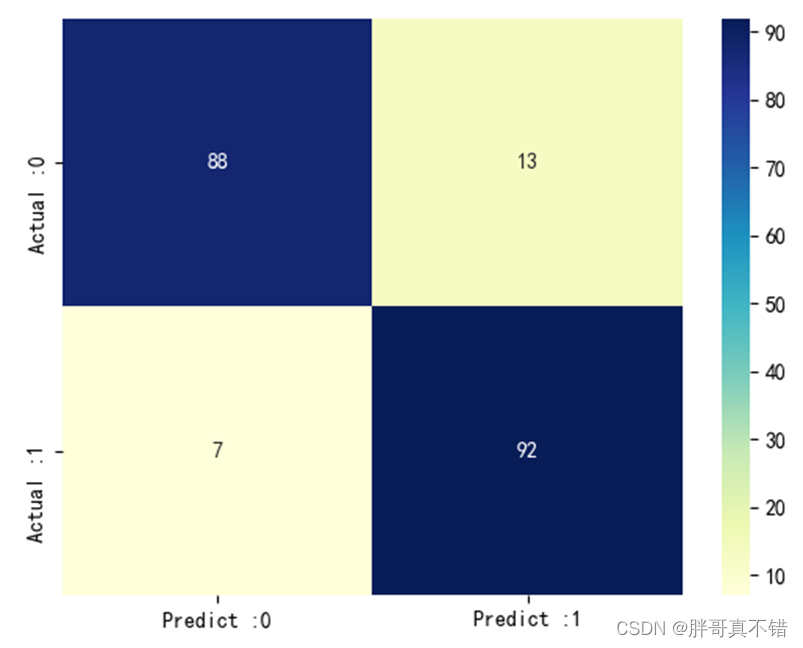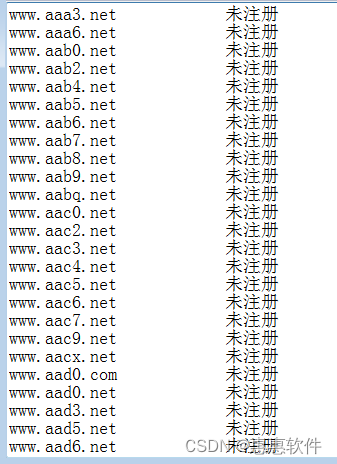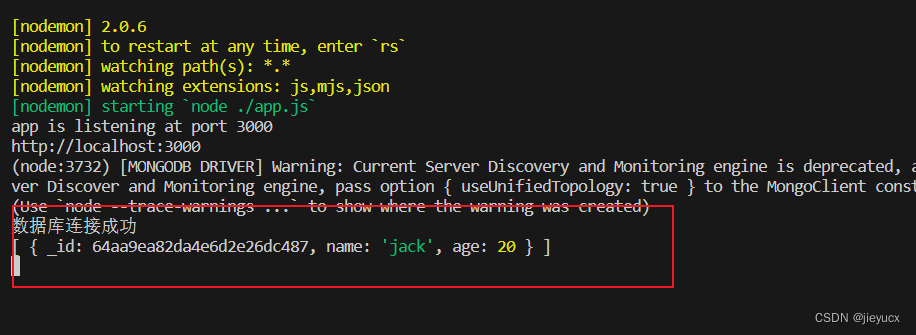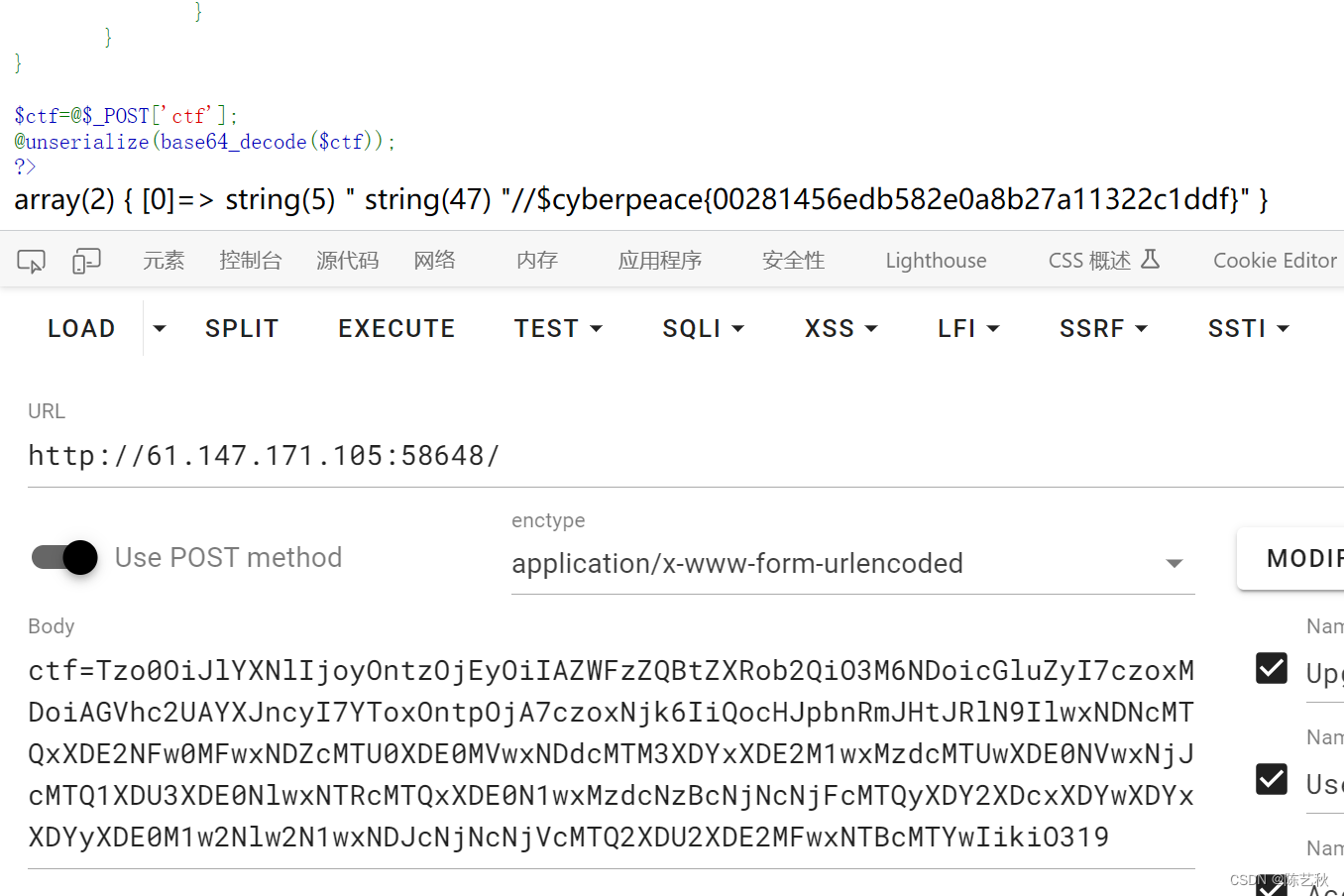前言
由于最近期末考试,所以之前几场都没打,给大家带了不便,非常抱歉。
这个暑假,我将会持续更新,并给大家带了更好理解的题解!希望大家多多支持。
由于, A ∼ C A\sim C A∼C 题比较简单,所以就不写了,如果大家有不会的,可以私信问我。
D - Add One Edge
1. Description
Problem Statement
We have an undirected graph with
(
N
1
+
N
2
)
(N_1+N_2)
(N1+N2) vertices and
M
M
M edges. For
i
=
1
,
2
,
…
,
M
i=1,2,\ldots,M
i=1,2,…,M, the
i
i
i-th edge connects vertex
a
i
a_i
ai and vertex
b
i
b_i
bi.
The following properties are guaranteed:
Vertex
u
u
u and vertex
v
v
v are connected, for all integers
u
u
u and
v
v
v with
1
≤
u
,
v
≤
N
1
1 \leq u,v \leq N_1
1≤u,v≤N1.
Vertex
u
u
u and vertex
v
v
v are connected, for all integers
u
u
u and
v
v
v with
N
1
+
1
≤
u
,
v
≤
N
1
+
N
2
N_1+1 \leq u,v \leq N_1+N_2
N1+1≤u,v≤N1+N2.
Vertex
1
1
1 and vertex
(
N
1
+
N
2
)
(N_1+N_2)
(N1+N2) are disconnected.
Consider performing the following operation exactly once:
choose an integer
u
u
u with
1
≤
u
≤
N
1
1 \leq u \leq N_1
1≤u≤N1 and an integer
v
v
v with
N
1
+
1
≤
v
≤
N
1
+
N
2
N_1+1 \leq v \leq N_1+N_2
N1+1≤v≤N1+N2, and add an edge connecting vertex
u
u
u and vertex
v
v
v.
We can show that vertex
1
1
1 and vertex
(
N
1
+
N
2
)
(N_1+N_2)
(N1+N2) are always connected in the resulting graph; so let
d
d
d be the minimum length (number of edges) of a path between vertex
1
1
1 and vertex
(
N
1
+
N
2
)
(N_1+N_2)
(N1+N2).
Find the maximum possible
d
d
d resulting from adding an appropriate edge to add.
1
≤
N
1
,
N
2
≤
1.5
×
1
0
5
1 \leq N_1,N_2 \leq 1.5 \times 10^5
1≤N1,N2≤1.5×105
0
≤
M
≤
3
×
1
0
5
0 \leq M \leq 3 \times 10^5
0≤M≤3×105
1
≤
a
i
≤
b
i
≤
N
1
+
N
2
1 \leq a_i \leq b_i \leq N_1+N_2
1≤ai≤bi≤N1+N2
(
a
i
,
b
i
)
≠
(
a
j
,
b
j
)
(a_i,b_i) \neq (a_j,b_j)
(ai,bi)=(aj,bj) if
i
≠
j
i \neq j
i=j.
Vertex
u
u
u and vertex
v
v
v are connected for all integers
u
u
u and
v
v
v such that
1
≤
u
,
v
≤
N
1
1 \leq u,v \leq N_1
1≤u,v≤N1.
Vertex
u
u
u and vertex
v
v
v are connected for all integers
u
u
u and
v
v
v such that
N
1
+
1
≤
u
,
v
≤
N
1
+
N
2
N_1+1 \leq u,v \leq N_1+N_2
N1+1≤u,v≤N1+N2.
Vertex
1
1
1 and vertex
(
N
1
+
N
2
)
(N_1+N_2)
(N1+N2) are disconnected.
All input values are integers.
Input
The input is given from Standard Input in the following format:
N 1 N_1 N1 N 2 N_2 N2 M M M
a 1 a_1 a1 b 1 b_1 b1
⋮ \vdots ⋮
a M a_M aM b M b_M bM
Output
Print the answer.
Sample Input 1
3 4 6
1 2
2 3
4 5
4 6
1 3
6 7
Sample Output 1
5
If we set
u
=
2
u=2
u=2 and
v
=
5
v=5
v=5, the operation yields
d
=
5
d=5
d=5, which is the maximum possible.

Sample Input 2
7 5 20
10 11
4 5
10 12
1 2
1 5
5 6
2 4
3 5
9 10
2 5
1 4
11 12
9 12
8 9
5 7
3 7
3 6
3 4
8 12
9 11
Sample Output 2
4
2. Solution

根据这个图以及题目大意,可以看出题目中所给的无向图一定是分成了两个连通块,并且起点
1
1
1,终点
N
1
+
N
2
N_1+N_2
N1+N2一定不再同一个连通块内部。
(1)对于连通块
1
1
1,我们只需计算起点
1
1
1 到连通块内各个顶点的最短距离,取出最长的距离
r
e
s
1
res_1
res1。
(2)对于连通块
2
2
2,我们只需计算终点
N
1
+
N
2
N_1+N_2
N1+N2 到连通块内各个顶点的最短距离,取出最长的距离
r
e
s
2
res_2
res2。
最后的答案就是 r e s 1 + r e s 2 + 1 res_1+res_2+1 res1+res2+1,因为我们中间还要加一条边,所以距离还会多 1 1 1。
3.Code
#include <iostream>
#include <cstring>
#include <queue>
#include <vector>
using namespace std;
const int N = 3e5 +10;
int n1, n2, m;
int u, v;
vector<int> g[N];
int dist[N], st[N];
void bfs(int start) //模版(不多说了,不会的可以问我)
{
memset(dist, 0x3f, sizeof dist);
memset(st, 0, sizeof st);
queue<int> q;
q.push(start);
dist[start] = 0;
while (q.size())
{
auto t = q.front();
q.pop();
if (st[t]) continue;
st[t] = 1;
for (auto c : g[t])
q.push(c), dist[c] = min(dist[c], dist[t] + 1);
}
}
int main()
{
cin >> n1 >> n2 >> m;
while (m --)
{
cin >> u >> v;
g[u].push_back(v), g[v].push_back(u);
}
bfs(1); //求连通块1内点1到其他点的最短距离
int res1 = 0;
for (int i = 1; i <= n1; i ++)
res1 = max(res1, dist[i]);//取出到所有点中最短距离中最长的
bfs(n1 + n2);//求连通块2内点N1+N2到其他点的最短距离
int res2 = 0;
for (int i = n1 + 1; i <= n1 + n2; i ++)
res2 = max(res2, dist[i]); //取出到所有点中最短距离中最长的
cout << res1 + res2 + 1 << endl;
return 0;
}
4. Time Complexity: O ( N 1 + N 2 ) O(N_1+N_2) O(N1+N2)
E - Family and Insurance
1.Description
Problem Statement
There is a family consisting of person
1
1
1, person
2
2
2,
…
\ldots
…, and person
N
N
N. For
i
≥
2
i\geq 2
i≥2, person
i
i
i’s parent is person
p
i
p_i
pi.
They bought insurance
M
M
M times. For
i
=
1
,
2
,
…
,
M
i=1,2,\ldots,M
i=1,2,…,M, person
x
i
x_i
xi bought the
i
i
i-th insurance, which covers that person and their descendants in the next
y
i
y_i
yi generations.
How many people are covered by at least one insurance?
Constraints
2
≤
N
≤
3
×
1
0
5
2 \leq N \leq 3 \times 10^5
2≤N≤3×105
1
≤
M
≤
3
×
1
0
5
1 \leq M \leq 3 \times 10^5
1≤M≤3×105
1
≤
p
i
≤
i
−
1
1 \leq p_i \leq i-1
1≤pi≤i−1
1
≤
x
i
≤
N
1 \leq x_i \leq N
1≤xi≤N
1
≤
y
i
≤
3
×
1
0
5
1 \leq y_i \leq 3 \times 10^5
1≤yi≤3×105
All input values are integers.
Input
The input is given from Standard Input in the following format:
N N N M M M
p 2 p_2 p2 … \ldots … p N p_N pN
x 1 x_1 x1 y 1 y_1 y1
⋮ \vdots ⋮
x M x_M xM y M y_M yM
Output
Print the answer.
Sample Input 1
7 3
1 2 1 3 3 3
1 1
1 2
4 3
Sample Output 1
4
The
1
1
1-st insurance covers people
1
1
1,
2
2
2, and
4
4
4, because person
1
1
1’s
1
1
1-st generation descendants are people
2
2
2 and
4
4
4.
The
2
2
2-nd insurance covers people
1
1
1,
2
2
2,
3
3
3, and
4
4
4, because person
1
1
1’s
1
1
1-st generation descendants are people
2
2
2 and
4
4
4, and person
1
1
1’s
2
2
2-nd generation descendant is person
3
3
3.
The
3
3
3-rd insurance covers person
4
4
4, because person
4
4
4 has no
1
1
1-st,
2
2
2-nd, or
3
3
3-rd descendants.
Therefore, four people, people
1
1
1,
2
2
2,
3
3
3, and
4
4
4, are covered by at least one insurance.
Sample Input 2
10 10
1 1 3 1 2 3 3 5 7
2 1
5 1
4 3
6 3
2 1
7 3
9 2
1 2
6 2
8 1
Sample Output 2
10
2.Solution
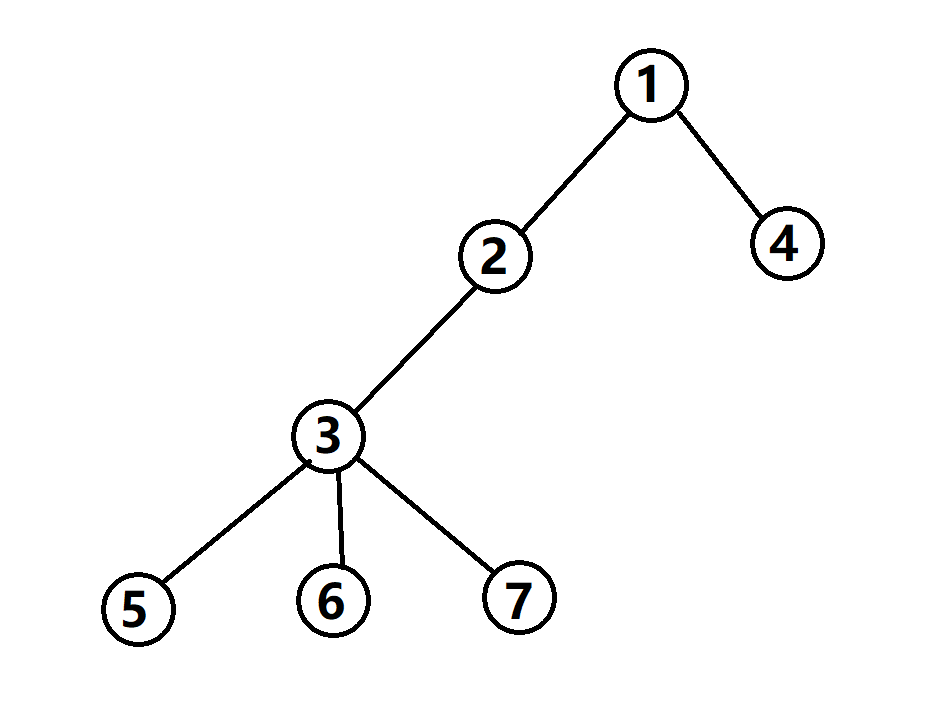
这是样例中所对应的树。
这道题可以运用动态规划。
设
f
i
f_i
fi 表示
i
i
i 号节点的保险还能延续到多少代。
那么转移就非常简单了:
f
i
=
max
(
f
i
,
f
p
i
−
1
)
f_i = \max (f_i, f_{p_i} - 1)
fi=max(fi,fpi−1) (注:
p
i
p_i
pi 即题目中所说的含义)。
之后,就进行对每一个点判断:
如果
f
i
≥
0
f_i\ge0
fi≥0,那么
r
e
s
+
+
res++
res++。
最后的答案就是 r e s res res。(不太明白的话,可以看看代码~~~)
3.Code
#include <iostream>
#include <cstring>
using namespace std;
const int N = 3e5 + 10;
int n, m;
int f[N], p[N];
int main()
{
cin >> n >> m;
p[1] = 1;
for (int i = 2; i <= n; i ++)
cin >> p[i];
memset(f, -1, sizeof f);
while (m --)
{
int x, y;
cin >> x >> y;
f[x] = max(f[x], y); //进行最初的赋值,表示x节点可以延续y代
}
for (int i = 1; i <= n; i ++)
f[i] = max(f[i], f[p[i]] - 1);
int res = 0;
for (int i = 1; i <= n; i ++)
if (f[i] >= 0)
res ++;
cout << res << endl;
}
4.Time Complexity: O ( N ) O(N) O(N)
F - Box in Box
1. Description
Problem Statement
There are
N
N
N boxes. The
i
i
i-th box has a shape of a rectangular cuboid whose height, width, and depth are
h
i
,
w
i
h_i,w_i
hi,wi, and
d
i
d_i
di, respectively.
Determine if there are two boxes such that one’s height, width, and depth are strictly greater than those of the other after rotating them if necessary.
Constraints
2
≤
N
≤
2
×
1
0
5
2 \leq N \leq 2 \times 10^5
2≤N≤2×105
1
≤
h
i
,
w
i
,
d
i
≤
1
0
9
1 \leq h_i,w_i,d_i \leq 10^9
1≤hi,wi,di≤109
All input values are integers.
Input
The input is given from Standard Input in the following format:
N N N
h 1 h_1 h1 w 1 w_1 w1 d 1 d_1 d1
⋮ \vdots ⋮
h N h_N hN w N w_N wN d N d_N dN
Output
Print Yes if there are two boxes such that one’s height, width, and depth are strictly greater than those of the other after rotating them if necessary; print No otherwise.
Sample Input 1
3
19 8 22
10 24 12
15 25 11
Sample Output 1
Yes
If you rotate the 2 2 2-nd box to swap its height and depth, the 3 3 3-rd box will have greater height, depth, and width.
Sample Input 2
3
19 8 22
10 25 12
15 24 11
Sample Output 2
No
Sample Input 3
2
1 1 2
1 2 2
Sample Output 3
No
2. Solution
都放在视频里拉~~~,不懂得话可以再来问我。
ABC 309 F题
线段树没有学的同学可以点这里!
3. Code
#include <iostream>
#include <algorithm>
using namespace std;
const int N = 2e5 + 10;
int n;
struct Node1
{
int h, w, d;
void change() //保证h, w, d升序
{
if (h > w) swap(h, w);
if (w > d) swap(w, d);
if (h > w) swap(h, w);
}
bool operator< (const Node1 &t)const //重载小于号
{
if (t.h == h)
return w > t.w;
return h < t.h;
}
}cube[N];
vector<int> discrete;
struct Node2
{
int l, r;
int mn;
}seg[8 * N]; //*8的原因是我们后面插入的时候为了离散化的方便,将Wi - 1也做成了节点
int find(int x) //离散化
{
return lower_bound(discrete.begin(), discrete.end(), x) - discrete.begin() + 1;
}
void pushup(int u)
{
seg[u].mn = min(seg[u << 1].mn, seg[u << 1 | 1].mn);
}
void build(int u, int l, int r) //建树
{
if (l == r)
seg[u] = {l, l, 0x3f3f3f3f};
else
{
seg[u] = {l, r};
int mid = l + r >> 1;
build(u << 1, l, mid), build(u << 1 | 1, mid + 1, r);
pushup(u);
}
}
void modify(int u, int x, int d) //单点修改
{
if (seg[u].l == x && seg[u].r == x)
seg[u].mn = min(seg[u].mn, d);
else
{
int mid = seg[u].l + seg[u].r >> 1;
if (x <= mid) modify(u << 1, x, d);
else modify(u << 1 | 1, x, d);
pushup(u);
}
}
int query(int u, int l, int r) //区间查询
{
if (seg[u].l >= l && seg[u].r <= r)
return seg[u].mn;
int mid = seg[u].l + seg[u].r >> 1, res = 0x3f3f3f3f;
if (l <= mid) res = query(u << 1, l, r);
if (r > mid) res = min(res, query(u << 1 | 1, l, r));
return res;
}
int main()
{
cin >> n;
for (int i = 1; i <= n; i ++)
cin >> cube[i].h >> cube[i].w >> cube[i].d, cube[i].change();
sort(cube + 1, cube + 1 + n);
for (int i = 1; i <= n; i ++) discrete.push_back(cube[i].w), discrete.push_back(cube[i].w - 1);
sort(discrete.begin(), discrete.end());
discrete.erase(unique(discrete.begin(), discrete.end()), discrete.end());
build(1, 0, discrete.size());
for (int i = 1; i <= n; i ++)
{
int ans = query(1, 0, find(cube[i].w - 1));
if (ans < cube[i].d)
{
cout << "Yes" << endl;
return 0;
}
modify(1, find(cube[i].w), cube[i].d);
}
cout << "No" << endl;
}



